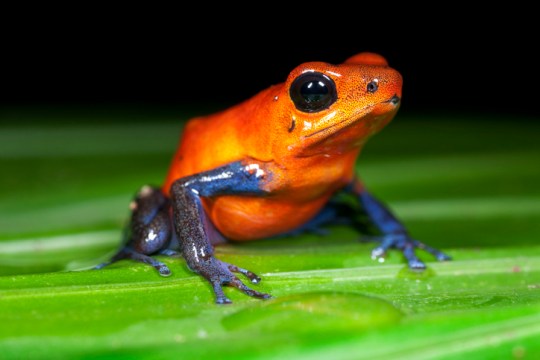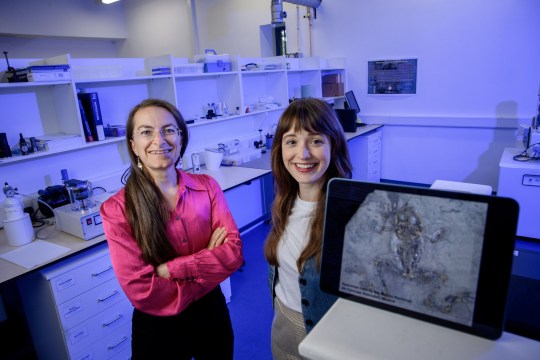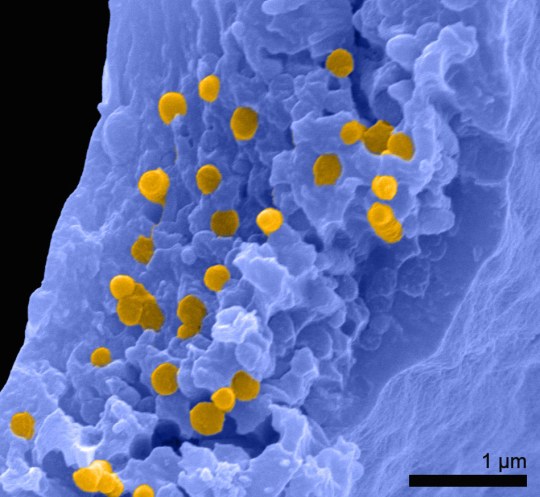Scientists have made a big leap in discovering the origins of ginger hair – in 10 million-year-old frogs.
Palaeontologists at University College Cork found the earliest evidence of pheomelanin, the pigment that produces ginger colouration, in the ancient specimens.
The study marks a breakthrough in the molecular analysis of fossils, which will help reconstruct the original colours of extinct species.
‘This finding is so exciting because it puts palaeontologists in a better place to detect different melanin pigments in many more fossils,’ said Dr Tiffany Slater, who led the study alongside Professor Maria McNamara.
‘This will paint a more accurate picture of ancient animal colour and will answer important questions about the evolution of colours in animals. Scientists still don’t know how – or why – phaeomelanin evolved because it is toxic to animals, but the fossil record might just unlock the mystery.’
Pheomelanin is one of two forms of melanin found in vertebrates such as mammals, birds and reptiles. The more common form, eumelanin, has a wide range of positive functions, including protecting cells when exposed to UV light.
However, pheomelanin is phototoxic, and when exposed to light can amplify the processes involved in sun-induced DNA damage. It also uses up a key antioxidant.
Beyond being involved in colour patterns that may help with camouflage, the reasons behind pheomelanin’s evolution remain a mystery.
In humans it remains very rare – less than 2% of the world’ population has red hair.
Now however, having discovered traces of the pigment much earlier in the fossil record, its origins may be better understood.
‘Fossils are invariably altered by the ravages of heat and pressure during burial, but that doesn’t mean that we lose all original biomolecular information,’ said Professor McNamara.
‘Our fossilisation experiments were the key to understanding the chemistry of the fossils, and prove that traces of biomolecules can survive being cooked during the fossilisation process.’
The team performed laboratory experiments on black, ginger, and white feathers to track how phaeomelanin pigments degrade during the fossilisation process, backing up their interpretations of the fossil chemistry.
‘There is huge potential to explore the biochemical evolution of animals using the fossil record, when we account for chemical changes during fossilisation.’
The study is published in the journal Nature Communications.
MORE : Weird and wonderful Welsh fossils reveal marine life from 462,000,000 years ago
MORE : Prehistoric bird believed to be extinct returns to the wild
Get your need-to-know
latest news, feel-good stories, analysis and more
This site is protected by reCAPTCHA and the Google Privacy Policy and Terms of Service apply.












